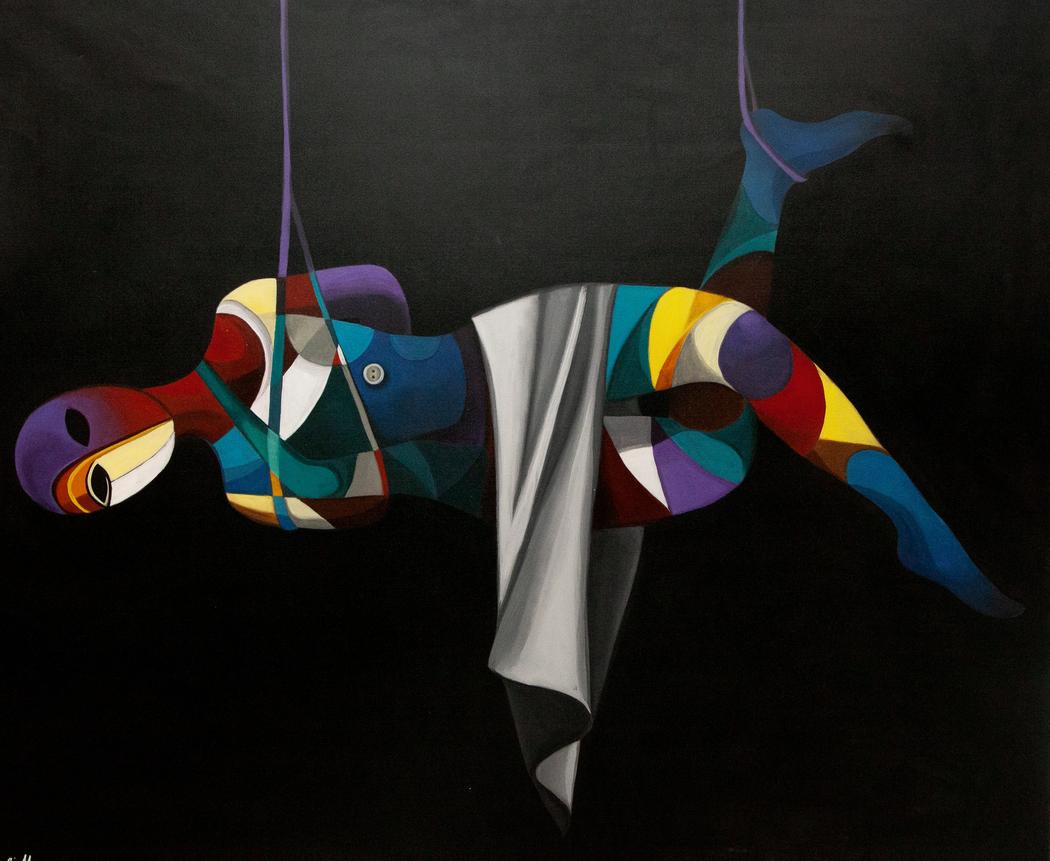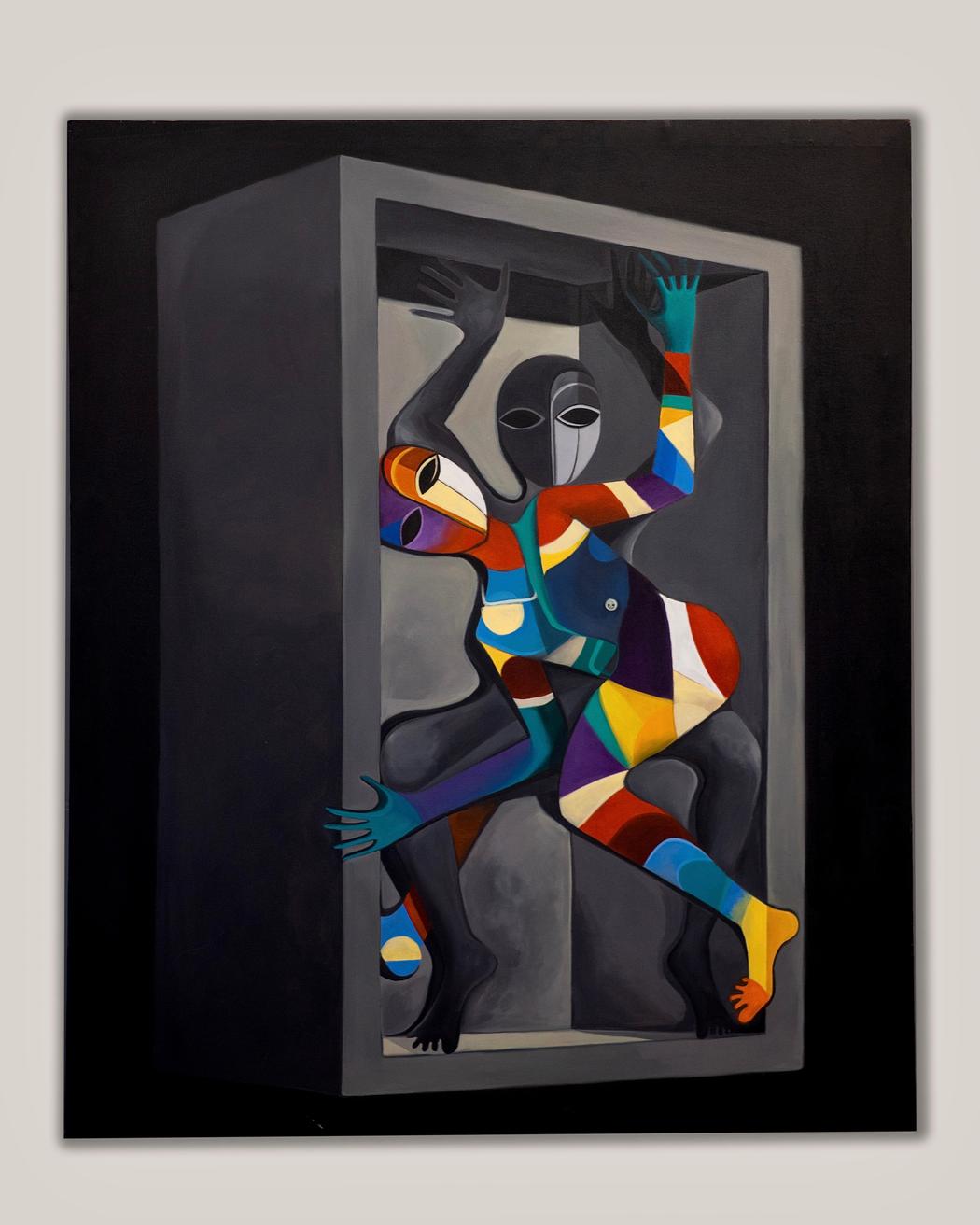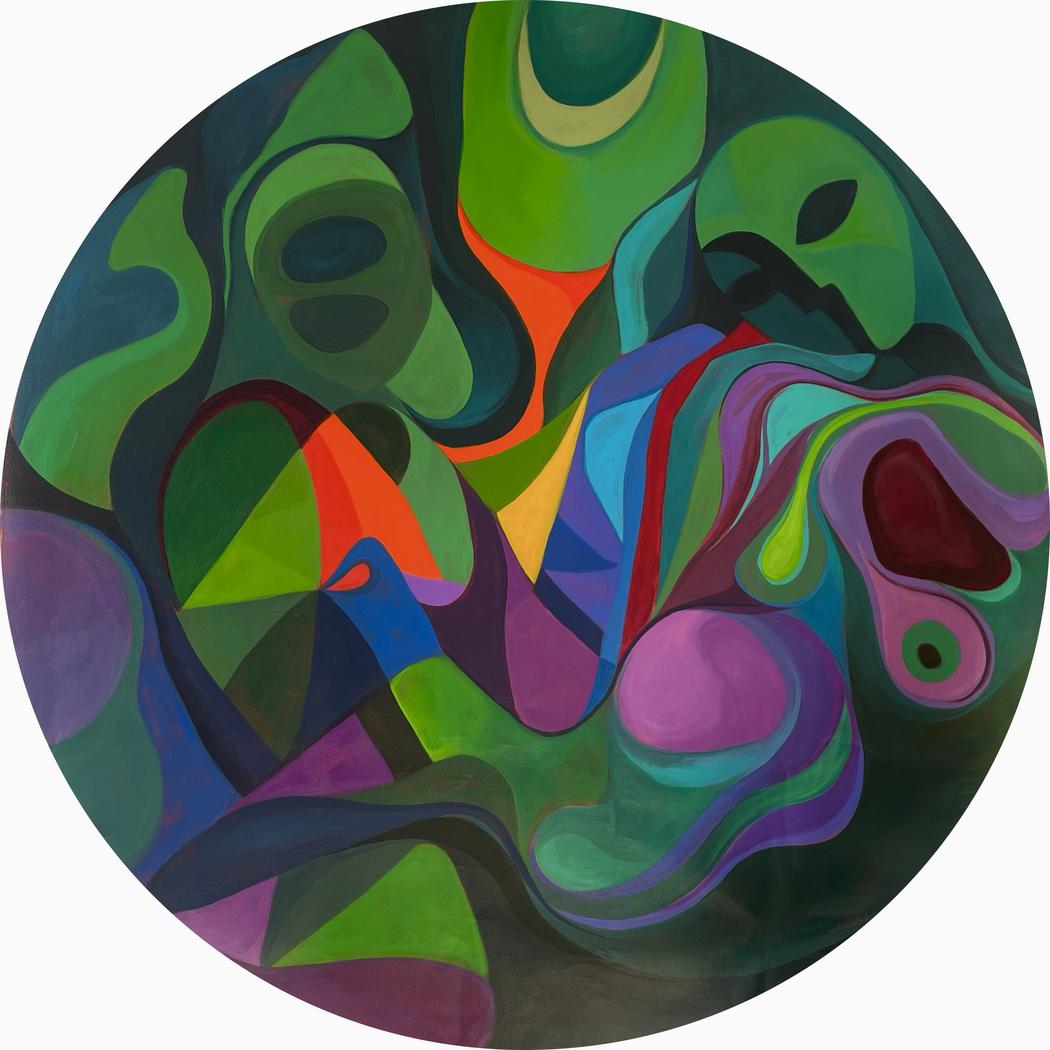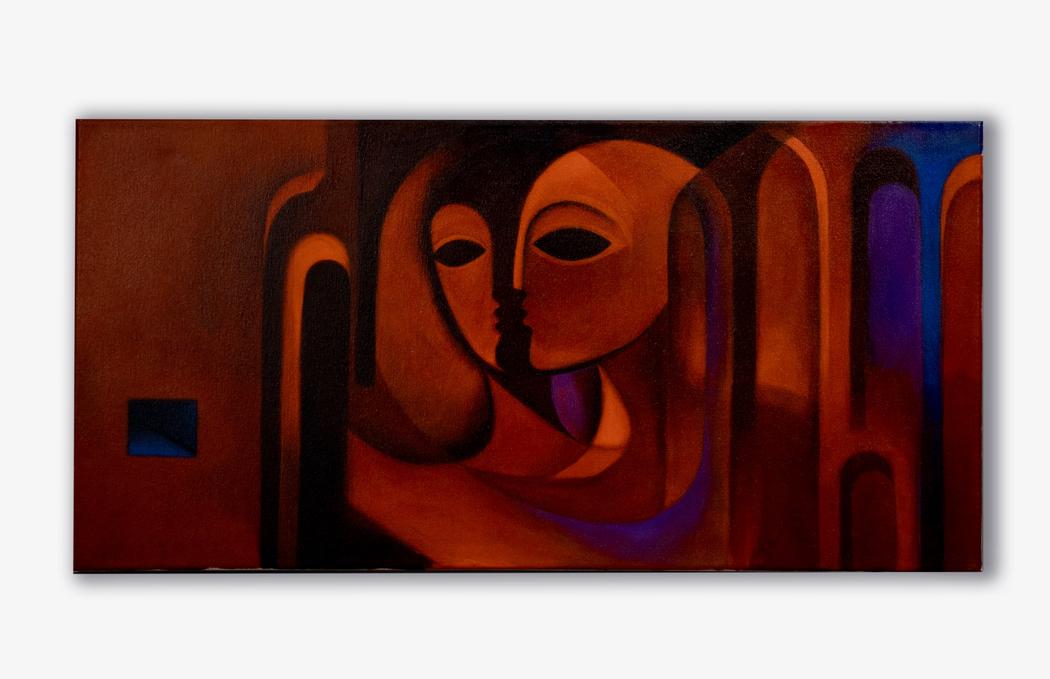Tabarak Mansour
Where do you live: Baghdad, Iraq
Your education: Diploma, Institute of Fine Arts (2013); BA, College of Fine Arts, University of Baghdad (2018)
Describe your art in three words: Free, Human, Dreamlike
Your discipline: Multidisciplinary Visual Artist
 Tabarak Mansour | Veiled Body | 2025
Tabarak Mansour | Veiled Body | 2025
You began creating art in Baghdad and have worked across sculpture, painting, glass, and more. How did your early experiences and training in Iraq shape your artistic vision?
I studied Fine Arts for nine years in Baghdad, and I learned painting, sculpture, printmaking, glass painting, and design. The formation there is intensive, comprehensive, and rich, giving the student a wide foundation of experience at an early age—and these experiences were essential in shaping me.
But honestly, the classical style was dominant in our curricula, and it made me feel bored, and we had to adhere to pure realism; I felt that I needed a wider space to create my own language. I started, as a student, to paint as I felt, with my own colors, releasing my shapes and emotions without hesitation.
It was not easy to learn under the conditions of sectarian war, to go on our way to education and witness the destruction and the tense situations over the long years. But I feel that this was a great motivation for me: to witness all this death, and to insist on life and on art.
In your statement you describe masks and boxes as metaphors for hidden and revealed identities. Could you share how this idea first emerged for you?
The idea began with very small details. We had a large wooden trunk at home—a trunk for storage and decoration. My mother kept in it my father’s belongings: the olive-green war bag, old letters, photographs, and things of her own and my father’s. She rarely allowed us to approach it, and it remained a mystery to me.
Over time, I realized that what we hide in trunks mirrors what we hide inside ourselves. In later years, amid war and the weary faces around me, I saw how people wore masks to keep going—and I was among them, with my own mask to cope with a society I do not quite resemble, and my own trunk where I dwell, from which I emerge whenever I wish.
That was when I understood that trunks and masks are not just objects, but symbols of our identities—what we reveal and what we keep in the shadows.- How do war, fear, and social changes in Iraq and the Middle East inform your exploration of identity and transformation?
 Tabarak Mansour | Who Deserves The Light | 2024
Tabarak Mansour | Who Deserves The Light | 2024
How do war, fear, and social changes in Iraq and the Middle East inform your exploration of identity and transformation?
Iraq has gone through wars and sanctions, and although I have lived more than 30 years in this environment and have seen all these painful images, and witnessed all the changes this society has undergone, in a way I became accustomed to the scene. Yet inside I know that I never truly grew accustomed to anything, and that one day I want to gain my peace far from what I have seen.
I do not believe that a sensitive artist is capable of changing a society so deeply consumed by wars. The corrupt politician is the one who has altered the values of this society.
Certainly, what wars and social transformations in the Middle East have left upon me is not good—fear and a lack of integration. This made me hide often, searching for a civil society, and perhaps I paint this civil society in my dreams and in my artworks.
 Tabarak Mansour | The Soul And The Beast | 2025
Tabarak Mansour | The Soul And The Beast | 2025
Do you think of the “box” more as a place of protection, a prison, or something else entirely?
The box is my private joyful room, and also my dark room; the place that protects me, and the place where I am imprisoned. I always try to get out of it, but after that I return to it again, because I have learned that I can open it whenever I want.
How do color choices—especially your vibrant contrasts of black, grey, and rich jewel tones—support the emotional impact of your pieces?
I am a somewhat organized person, and I choose everything with order. The work has stages for me. I draw the sketch in a preliminary way, then I transfer it professionally in its final form onto white paper with a pencil, and afterwards I transfer it again onto the canvas, and then color it. I can imagine the colors of the work before I begin it, but sometimes the colors impose themselves on my imagination and appear in an unexpected way. Even my palette is organized and ready, but it changes when my mind sinks into something while I am painting, and then the painting becomes instinctive and spontaneous, and the colors emerge one after another.
 Tabarak Mansour | The House Of My Homeland | 2023
Tabarak Mansour | The House Of My Homeland | 2023
How do you balance the personal and the political in your art?
Many Iraqi and Arab artists have introduced politics into their works and artistic projects. I feel that I cannot embody it in my works, as I do not like it. When I want to read, I prefer to read about politics and what happened in my country, what the causes of the region’s conflicts are, and what the beginnings of the divisions between religions and sects were. I try to understand from a distance without taking any side other than the side of peace.
Meanwhile, the personal side prevails in my works, and what matters to me is the psychology of the human being, this strange creature, and the decoding of its secrets.

Leave a Reply